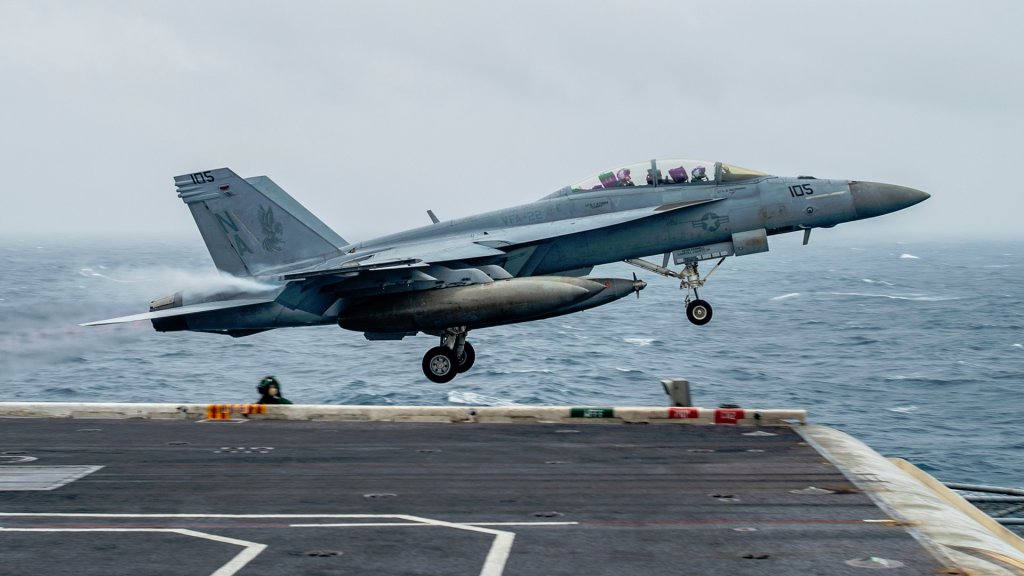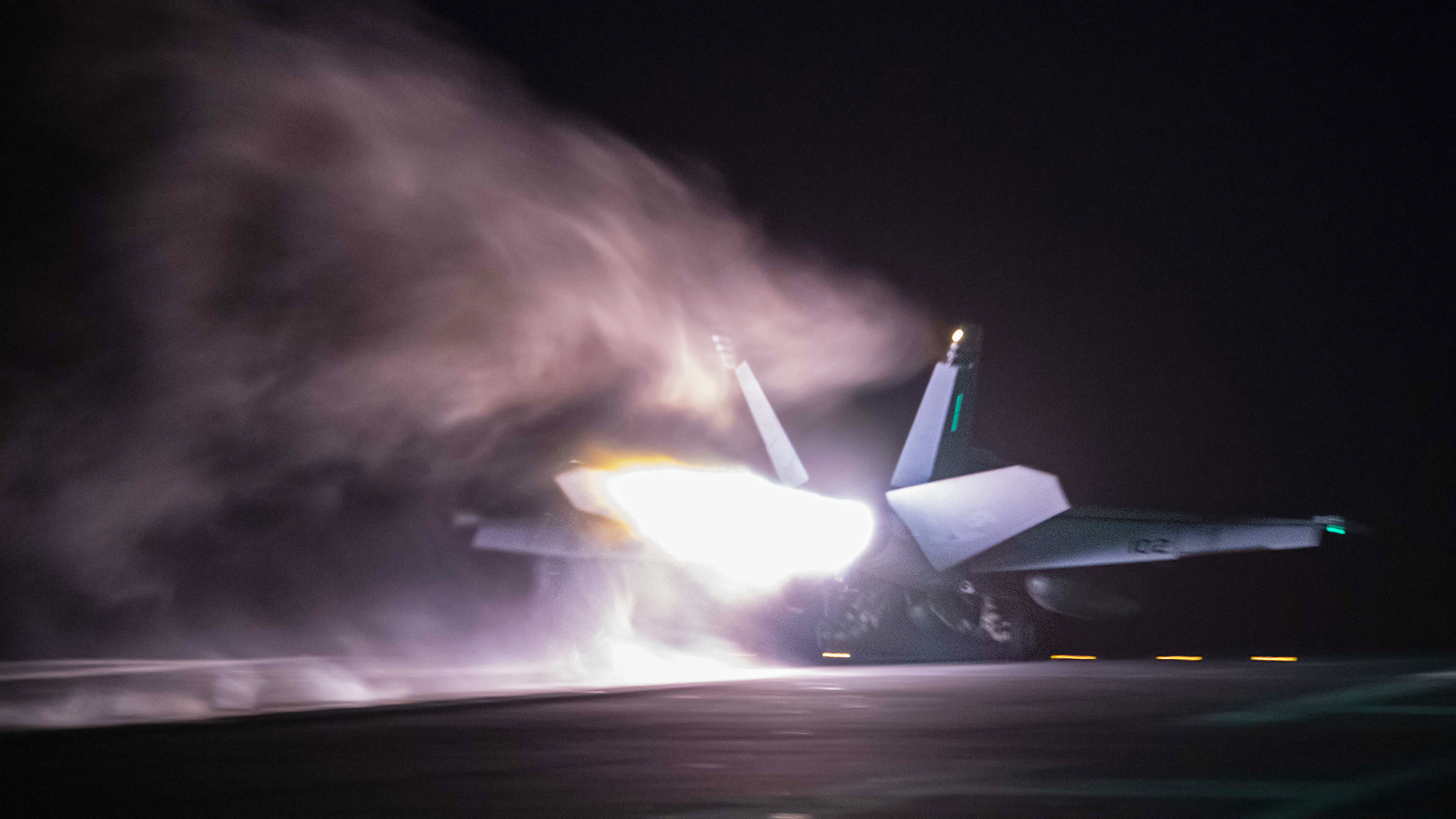A friendly fire incident in the Red Sea this past weekend that saw a U.S. Navy Ticonderoga class cruiser down an F/A-18F Super Hornet came as jets were returning to the supercarrier USS Harry S. Truman, TWZ has learned. The Harry S. Truman Carrier Strike Group had also been fending off a sustained Houthi drone and missile attack leading up to the friendly fire incident. You can read more about what is known about this incident in our earlier reporting here.
“After successfully returning from its initial mission, an F/A-18F launched again to provide air defense support from OWAs and ASCMs that were inbound to the force,” a U.S. official told us. “They were shot down while recovery of remaining aircraft was underway.”
The F/A-18F was officially downed early on Dec. 22 local time by a missile from the Ticonderoga class cruiser USS Gettysburg. Aircraft from the Harry S. Truman‘s air wing had also struck Houthi targets in Yemen on the night of Dec. 21-22.
“In the hours leading up to the incident, though, the [Truman] CSG [Carrier Strike Group] had successfully shot down two anti-ship cruise missiles (ASCM) and two one-way attack uncrewed aerial vehicles (OWA UAV) with reports of other OWA UAVs in the air,” the official added. “The wreckage has not been located and is likely at the bottom of the Red Sea. Both crew members were successfully recovered and are back on the USS Harry S. Truman. Initial reports are that one of the crew members has minor injuries. Both have been evaluated and released from medical.”
Earlier today, Naval Air Force Atlantic (AIRLANT) separately told us that the two-seat Super Hornet had been “performing a refueling mission” at the time of the friendly fire incident. We had already reached out for more clarification on what exactly the jet’s mission had been. Whether or not the jet was providing “air defense support” or if it was in a tanker configuration primarily to support the jets providing air defense support at the time is unclear. As TWZ noted earlier, F/A-18Fs do regularly provide aerial refueling support for other aircraft in Navy carrier air wings.

There are also rumors that another Navy jet was fired upon and almost accidentally shot down during the recovery process aboard the ship as well, but TWZ has not been able to confirm that at this time.
In comments to us tonight, the U.S. official did stress that “an investigation is underway to determine the facts and circumstances” surrounding the friendly fire incident. Many questions remain about how and why the crew of the USS Gettysburg, the most advanced Ticonderoga class cruiser in operational service at present, which returned to the fleet last year with a slew of major upgrades to its air and missile defense suite and other systems, mistakenly shot down the F/A-18F. The fact that this appears to have occurred during recovery is even more puzzling.
Regardless, the details as we understand them now underscore the complexities of the current operating environment that U.S. forces are facing in and around the Red Sea. As TWZ wrote earlier:
“The Red Sea is an extremely high-threat environment with multiple layers of threats, some of which can be very hard to detect and categorize. The Houthis are actively targeting American warships, as well as commercial vessels, with various aerial drones, cruise missiles, anti-ship ballistic missiles, and unmanned surface vessels, often simultaneously. The available time in which to make potentially serious decisions can be measured in seconds.”
If nothing else, thankfully both aviators onboard the downed F/A-18F, who have now been released from medical, did not suffer any serious injuries or worse.
Contact the author: joe@twz.com
